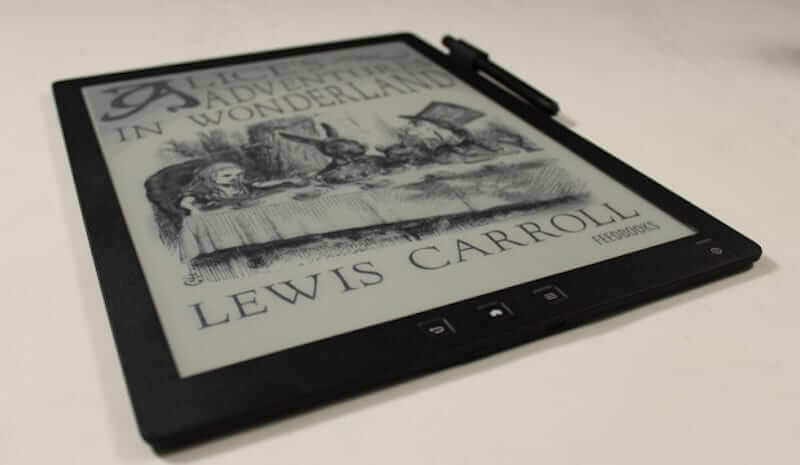There are two major camps when it comes to e-readers. People who want something that is a dedicated reading device to consume ebooks and those who covet features that multipurpose tablets have, such as games and apps.
A Brief History
Our reading habits have really changed over the past decade. In 2007, when Amazon released their first generation Kindle, ebooks enjoyed a surge in popularity; the popular device literally changed the world of reading. There was suddenly a viable alternative to buying hardcovers, paperbacks and used books. Hundreds of new companies entered the fray and started to sell their own e-readers but there are only a handful still standing in 2018. The brands that survive either sell hardware with built in bookstores or offer a unique experience, such as digital note-taking (Sony Digital Paper, Remarkable, Onyx Note, and Good e-Reader 13.3) or an Android-driven experience that’s not locked into a walled garden and gives the user the flexibility to install their own apps.
Why e-readers?
The most popular e-reading brands in the world, such as Amazon, Barnes and Noble and Kobo put books first. They have massive online stores that can be accessed right on the device. People often go with e-readers because it’s the closest you can get to reading on real paper and because their screens are easy on the eyes. You can buy ebooks right in your PJs and place pre-orders and have them delivered right away to your account.
As mentioned though, e-readers can offer more than digitized books. Kindle Active Content was a platform that nobody really knew about, other than hardcore readers and developers. The storefront was developed to allow the creation of simple games, from dots and boxes to more complex apps like the choose your own adventure genre of story (like Dusk World). There are also crosswords, utilities, and test prep apps for students. There are currently 490 apps in the Kindle Active Content store but Amazon dropped support for it when the Voyage was released in 2014 and it hasn’t returned on subsequent e-readers. Once Amazon started to put a greater emphasis on their Fire tablets and their own Android app store, the Kindle Active Content store was doomed.
The modern Kindle is not totally distraction free but it was designed around reading first. Built with support for GoodReads, which is a social community geared towards discovery and discussion, as well as X-Ray, which is useful for users who juggle multiple titles and forget who specific characters are, Amazon’s latest models have made reading a much more interactive, social experience. The same range of devices also offer support for translation and popular notes.
Enter Android…
Kobo, Pocketbook and other brands still put rudimentary games on their e-ink devices, such as chess and Sudoku. However, these companies are not developing new titles; they simply recycle the games that have been present on their flagship devices for the best part of seven years. Unfortunately, as Kobo never disclosed any statistics regarding the use of their programs, it is hard to know if they are successful.
One of the most popular games to make its way to the earliest e-readers was blackjack. Amazon released its own version of the game for its Kindle devices way back in 2010, while Kobo bundled the classic table game into its Wireless Reader as an Easter egg, along with poker. Perhaps unknowingly, e-reader brands wound up continuing a trend that goes back to the earliest days of gaming; many new consoles, from the Atari 2600 to the ZX Spectrum, opened their account in the world with a blackjack or casino game. The fact that blackjack can still be played online with modern technology like HTML5 and Flash is testament to the table game’s popularity.
But what about the sophisticated gaming experiences that mobile gamers enjoy? Can they ever make their way to e-readers? A solution to the dearth of interactive content on e-readers may have arrived in the shape of Google’s mobile operating system, Android. There are several popular e-reading brands all over the world that have embraced Android as an avenue to turn a basic digital reader into a multipurpose tablet. Icarus, Inkbook, Good e-Reader, Onyx Boox and dozens of others provide users with access to Google Play and other app stores, allowing users to install any app they want.
For instance, if, for whatever reason, a user doesn’t want to be stuck with the default e-reading app, they can simply download a new one. Also, for devices with Bluetooth functionality and/or a 3.5mm headphone jack or speaker, audiobook players like Audible or Scribd can transform a basic e-reader into something that can be used in the gym or on a hike, meaning that sore eyes don’t have to get in the way of finishing a good book.
What’s Next?
Android enabled e-readers are still quite a niche product, and their overall sales pale in comparison to Amazon or Kobo. Still, these brands that embrace Android and hype up bigger screens or digital note-taking devices generate enough revenue to keep on going, so there continues to be a market for them. The risk going forward though is one of identity; when does an e-reader become so sophisticated that it’s sold as a tablet? It’s arguable that much of the popularity of e-readers stems from their simplicity so adding bells and whistles could undermine future sales and alienate the customer base.
That’s a question for another day though.

